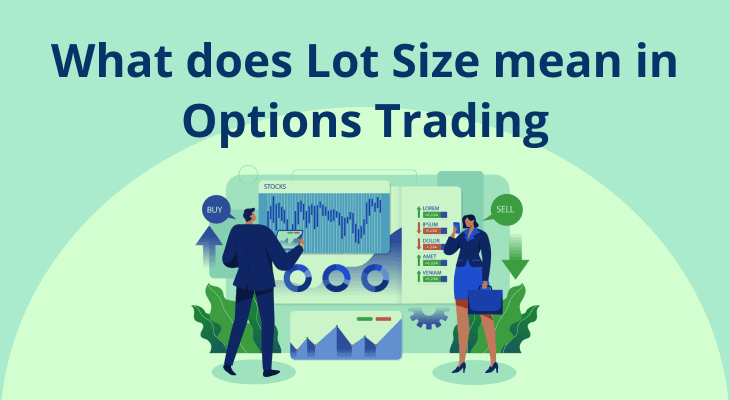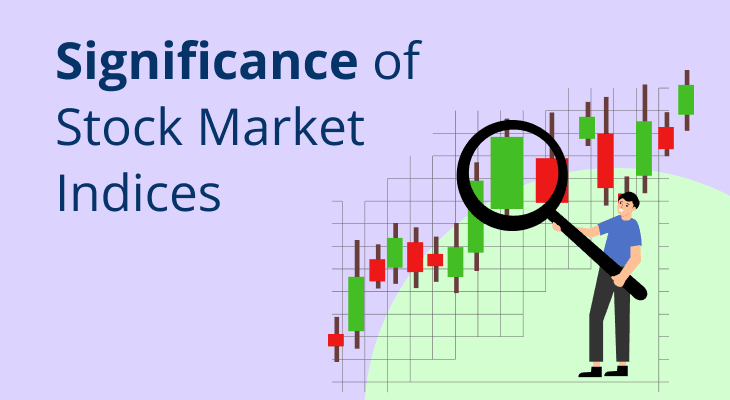
Stock Dividends: Essential Tips for Income-Focused Investors
Investing in stocks that pay dividends is a popular strategy among investors who wish to generate a form of regular income. Dividend stocks distribute a portion of earnings to shareholders. This is in contrast to regular growth stocks, which pump the profits back into the company to fuel various activities, such as expansion,. This can provide a steady income stream, making it an attractive option for those seeking regular returns. In this guide, we'll explore the essentials of investing in dividends in the stock market, including why you should consider them, how they compare to growth stocks, and the best dividend shares to add to your portfolio.
The Appeal of Dividend Stocks
Dividend stocks offer several benefits that make them appealing to income-focused investors. Here’s why you might want to consider adding dividends in stock to your portfolio:
Regular Income
One of the primary advantages of dividend stocks is the regular income they provide. Companies that pay dividends typically distribute them quarterly, providing a steady cash flow that can supplement your other income sources.
Financial Stability
Companies that consistently pay dividends often demonstrate financial stability and strong cash flow. These businesses are usually well-established, with a track record of profitability.
Potential For Capital Appreciation
While dividend stocks are typically associated with income generation, they can also offer capital appreciation. As these companies grow and perform well, their stock prices can increase, providing you with capital gains in addition to dividend income.
Hedge Against Inflation
Dividends can act as a hedge against inflation. As prices rise, the value of your fixed-income investments may decrease, but dividend payments can help offset these losses by providing a regular income stream that can increase over time.
Dividend Stocks vs. Growth Stocks
When deciding between dividend stocks and growth stocks, it’s essential to understand the key differences and how they align with your investment goals.
Dividend Stocks
Income Generation: Dividend stocks focus on providing income through regular dividend payments. This makes them suitable for investors seeking a steady cash flow.
Lower Volatility: Usually, stocks of companies that regularly offer dividends are found to be less volatile than most growth stocks. The consistent income from dividends can provide a cushion during market downturns.
Long-Term Stability: Companies that pay dividends are often mature, stable businesses with a proven track record of profitability.
Growth Stocks
Capital Appreciation: Growth stocks focus on capital appreciation. These companies reinvest profits into the business to fuel expansion and innovation.
Higher Volatility: Growth stocks can be more volatile, as their value is tied to future growth potential rather than current earnings.
No Dividends: Growth companies typically do not pay dividends, as they prefer to reinvest earnings to drive further growth.
How Are Dividends Distributed?
Understanding how dividends are paid out is crucial for making informed investment decisions. Here’s a breakdown of the dividend payment process:
Declaration Date
The company’s board of directors announces the dividend payment and sets key dates, including the record date and payment date.
Record Date
Shareholders who own the stock on this date are eligible to receive the dividend. If you purchase the stock after the record date, you will not receive the upcoming dividend payment.
Ex-Dividend Date
This is usually one business day before the record date. If you buy the stock on or after the ex-dividend date, you will not be eligible for the current dividend payment.
Payment Date
The company distributes the dividend to eligible shareholders on this date.
Six Types of Dividends
There are several types of dividends that companies can distribute to shareholders. Understanding these types can help you make more informed investment decisions:
Cash Dividends
The most common type of dividend, paid in cash to shareholders. These payments are typically made on a quarterly basis.
Stock Dividends
Companies may issue additional shares of stock as dividends. This increases the total number of shares outstanding but does not affect the company’s overall market value.
DRIPs
Dividend reinvestment plans (DRIPs) allow you to reinvest your received dividends back into the company’s stock, frequently at a discounted rate. Participation in DRIPs is usually optional, giving you the choice to receive your dividends in cash instead.
Scrip Dividends
These are promissory notes to pay shareholders at a later date. For example, if a company does not have sufficient cash to pay dividends at the moment, it can use scrip dividends to reward and reassure its investors that it will be converted to cash at a predetermined date.
Liquidating Dividends
Paid when a company is liquidating its assets, often during a merger or acquisition. These dividends are distributed from the company’s capital base, rather than its earnings.
Preferred Dividends
Paid to holders of preferred stock, these dividends are typically fixed and paid before any dividends are distributed to common shareholders.
Evaluating Dividends: Key Metrics
When assessing which dividends in stock to invest in, several key metrics can help you evaluate their potential:
Dividend Yield
This is calculated by dividing the annual dividend per share by the stock’s current price. It indicates how much income you can expect to earn relative to the stock’s price. For example, if a stock pays an annual dividend of ₹ 10 and its current price is ₹ 200, the dividend yield would be 5%.
Payout Ratio
This ratio measures the percentage of earnings paid out as dividends. If a company has a lower payout ratio then it usually implies that the company keeps more of its earnings for growth and expansion. On the other hand, a higher payout ratio indicates a focus on returning earnings to shareholders. A payout ratio above 100% can be a red flag, indicating that the company is paying out more in dividends than it earns.
Dividend Growth Rate
This measures the annual growth rate of a company’s dividend payments. A consistent increase in dividends can indicate a company’s strong financial health and commitment to returning value to shareholders.
Earnings Stability
Companies with stable earnings are more likely to maintain or increase their dividend payments. Look for companies with a history of consistent earnings growth and profitability.
Free Cash Flow
This is the cash generated by a company after accounting for capital expenditures. A healthy free cash flow indicates that the company has sufficient funds to pay dividends.
Taxation on Dividends
In India, dividends are subject to taxation, and understanding these tax implications can help you make informed investment decisions.
Dividend Distribution Tax (DDT)
Previously, companies paid a dividend distribution tax before distributing dividends to shareholders. However, the DDT was abolished under the Finance Act 2020, shifting the tax burden to shareholders.
Taxation For Shareholders
Dividends received by shareholders are now taxed according to their income tax slab rates. This means that the tax rate on dividends depends on the individual’s total taxable income.
TDS On Dividends
Under Sec 194 of the Income Tax Act, companies are required to deduct tax at source (TDS) on dividend payments if the total dividend exceeds ₹ 5,000 in a financial year. If you do not have or have not provided your PAN number, then the TDS rate will be 20%.
Conclusion
Investing in dividends in stock can be a powerful strategy for generating regular income and building long-term wealth. By understanding the various aspects of dividend investing, including how dividends are paid out, the different types of dividends, and how to evaluate them, you can make informed decisions and identify the best dividend shares for your portfolio. Remember to consider the tax implications and align your investment choices with your financial goals. Whether you're seeking steady income or a mix of income and growth, dividends in the stock market offer valuable opportunities for income-focused investors.
FAQ
What are dividends in stock?
Dividends in stock are payments made by a company to its shareholders, typically drawn from profits. They provide a steady income stream and can be issued as cash or additional shares, making them attractive to income-focused investors.
How do dividends in the stock market work?
Dividends in the stock market are declared by a company's board of directors and paid out regularly, usually quarterly. They represent a portion of the company’s earnings distributed to shareholders, rewarding them for their investment.
What stocks pay dividends?
Many well-established companies pay dividends, particularly those in sectors like utilities, consumer goods, and finance. These companies often have stable earnings and a history of profitability, making them reliable choices for dividend investors.
How does dividend yield work?
Dividend yield is calculated by dividing the annual dividend per share by the stock's current price. It shows the return on investment from dividends alone, helping investors assess the income potential of dividend stocks compared to other investments.
Are dividends taxed in India?
Yes, dividends are taxed in India. Since the Finance Act 2020, dividends are taxed according to the shareholder’s income tax slab rates. Companies also deduct TDS on dividends exceeding ₹ 5,000 annually, making it important to consider tax implications when investing in dividend stocks.
What are the types of dividends?
The main types of dividends are cash dividends, stock dividends, property dividends, scrip dividends, liquidating dividends, and preferred dividends. Each type has different characteristics and benefits, providing various options for companies to reward their shareholders.
What is the difference between dividend and growth stocks?
Dividend stocks provide regular income through dividend payments and are usually less volatile. Growth stocks focus on capital appreciation by reinvesting profits into the business, often resulting in higher volatility and the potential for significant value increase over time.
How are dividends paid out?
Dividends are paid out on a set schedule, typically quarterly. The process involves declaring a dividend, setting a record date for shareholder eligibility, an ex-dividend date (one business day before the record date), and finally, distributing the payment on the payment date.
What should you look for when evaluating dividends?
When evaluating dividends, consider the dividend yield, payout ratio, dividend growth rate, earnings stability, and free cash flow. These metrics help assess the sustainability and attractiveness of dividend payments, ensuring they align with your income goals.
What are the best dividend shares to buy?
The best dividend shares to buy are those from companies with a strong track record of profitability, consistent dividend payments, and potential for long-term growth. Companies in stable industries like utilities, consumer goods, and finance often make excellent choices for dividend investors.


